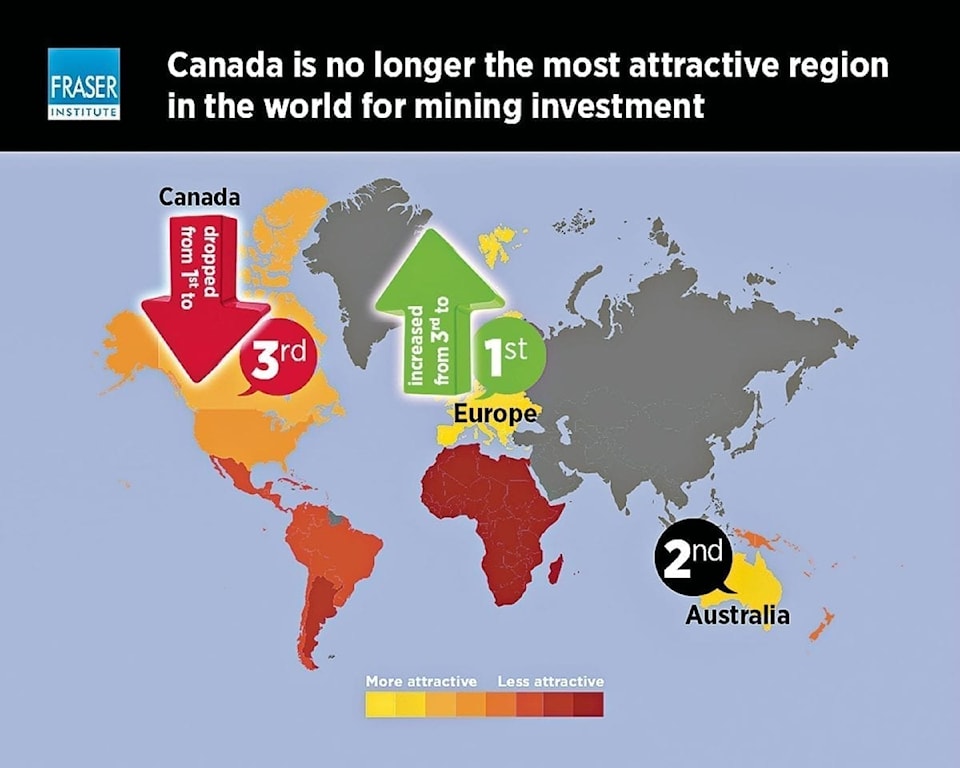The NWT has dramatically slid down the rankings of attractiveness for mineral explorers and developers, according to a survey put out by the Fraser Institute last month, but the GNWT says that perception should change.
Ranked 10th in attractiveness in 2018, the NWT was 35th in the 2019 results.
"Obviously, we take a report like this seriously – it is cause for concern," said Pamela Strand, deputy minister of Industry, Tourism and Investment.

Photo courtesy of the Fraser Institute
"But you also have to recognize that this report is a perception survey. For us as the Northwest Territories, it means we continually need to work on our image and continue to tell the story of our competitive edge."
The drop in rankings may not just reflect what's going on in the NWT but in Canada as a whole, following the cancellation of Teck Resources' Frontier oilsands project and the company's criticism of Canada's regulatory murkiness.
"For the first time in a decade, no Canadian province (or territory) ranked in the top 10 most attractive jurisdictions for mining investment," said Ashley Stedman, a senior policy analyst with the Fraser Institute and one of the authors of the survey report, "whereas four Canadian jurisdictions ranked in the global top 10 last year."
The decrease hasn't been uniform across the country, though, and Stedman said unique factors exist in the NWT that have contributed to its decline in perception.
"In terms of NWT this year, on the policy front we saw that there was increased concern over uncertainty concerning protected areas, increased concern over infrastructure and over uncertainty concerning environmental regulations," said Stedman, adding that there was also concern noted about regulatory process timelines and transparency.
Strand said there's another way to look at the NWT that considers the global context of an industry in transition, and the NWT is building its competitiveness on that front.
"I think a story that we are really working to promote and tell more about is our partnerships with Indigenous governments and our royalty sharing," said Strand.
"What's going on right now globally is investors are looking for jurisdictions that have that environmental and sustainability focus, and I can say that the projects in the territory do provide that because of the process that has to happen to get the authorization."
One example of the sort of partnerships Strand referenced is Cheetah Resources' rare earths project at Nechalacho, being operated by Det'on Cho Corp. and which is testing out new dry-processing technology that leaves behind only sand as a byproduct.
The GNWT also offers a pathfinder service in which officials helps companies navigate the regulatory processes, and Strand says this is seeing increasing uptake.
Strand says the GNWT needs to continue to incentivize exploration, keep refining and releasing data on the NWT's geology, continue pushing for investments in infrastructure such as roads and the Taltson hydroelectric facility expansion, and continue touting the benefits of a strong regulatory regime.
As well, the GNWT needs to keep building on its partnerships with Indigenous governments.
"It's a new way of looking at how to do business … I think globally we're in a transition period in the industry and I think maybe we are ahead of the game in the Northwest Territories, myself, with how we approach assessments of projects … and maybe that's what we're seeing," said Strand.
After all, as Strand says, "the rocks never change."
